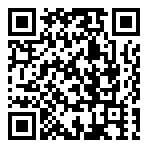SSNS Seminar – Dr Kelly Kilpatrick – ‘Pictish Writing and Pictish Symbols: Decoding the Newton Stone’
The SSNS Seminar Series continues on 23 February with a talk by Dr Kelly Kilpatrick (University of Glasgow), titled ‘Pictish Writing and Pictish Symbols: Decoding the Newton Stone’.
This is a free, ticketed event; please register below.
Abstract:
At Newton House near Insch in Aberdeenshire is a Pictish symbol stone and a stone with two inscriptions and a Pictish mirror symbol, the latter of which is known as the Newton Stone. Between the eighteenth and nineteenth centuries, the stones were removed from their original location west of Pitmachie, and in 1873 placed in the grounds of Newton House. The Newton Stone preserves multiple carvings. On the right edge is an ogham inscription that extends onto the lower face of the stone. A six-line alphabetic inscription is carved across the front face. Recently, a Pictish mirror symbol was discovered on a flat facet near the base.
The Newton Stone was a very popular, but controversial, monument in nineteenth and early twentieth-century scholarship particularly because of the alphabetic script, which generated a long history of wild speculations. It was suggested to be in Hebrew, Phoenician, Greek, a forgery, and ‘debased’ Latin, the latter of which was the most common scholarly consensus.
New analysis of the carvings on the Newton Stone reveals that the inscriptions and the Pictish symbol were planned and carved concurrently. The alphabetic script is shown to be in the Latin alphabet and is a particular type of dry point set script used in Late Antiquity for writing on media such as wax tablets. Although the script is in the Latin alphabet, the discernable words in the inscription indicate that it is in the Pictish language. The placement of the mirror symbol on the Newton Stone in comparison with its placement on other Class I stones, particularly those with three symbols in total, suggests that the ogham and alphabet inscriptions were used in place of Pictish symbols. The unique and invaluable Newton Stone provides evidence for vernacular writing in Pictland, and a potential clue towards decoding the Pictish symbol system.
Bio:
Dr Kelly Kilpatrick is an Affiliate Lecturer in the Department of Classics at the University of Glasgow and an Honorary Research Associate in the Department of Anglo-Saxon, Norse, and Celtic at the University of Cambridge. She is a Fellow of the Society of Antiquaries of Scotland, and a Vice President of the Pictish Arts Society. Kelly teaches ancient and early medieval Celtic material culture, epigraphy, religion, and mythology, and has a longstanding passion for Pictish and early Scottish history and archaeology. Her current research projects focus on Latin-alphabet epigraphy in Pictland, the iconography of pre-Christian Pictish religion and mythology, and the implementation of satellite archaeology to explore sites on the island of Tiree.
Registration below. Details for the Zoom meeting will be emailed in advance of the seminar.

